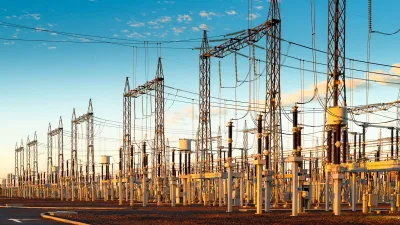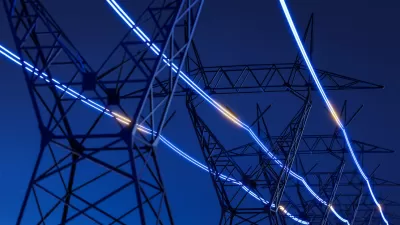Are U.S. utilities and energy infrastructure prepared for the energy demand of data centers to more than double by 2030, driven largely by increased use of AI?
As the use of AI technology grows, experts have their eyes on implications for the energy sector and electrical grid, reports Yahoo Finance. According to a 2021 study, training a large language model program like ChatGPT consumes enough energy to power 120 homes for the entire year. With the energy demands of data centers used to facilitate AI expected to nearly double by the end of this decade, from 17 gigawatts to up to 35 gigawatts a year, concerns about viability of the electrical grid, supply, and cost abound. Timothy Fox, a managing director for ClearView Energy Partners, put 35 gigawatts into perspective for Yahoo Finance interviewers:
That’s “about as much power as the state of New York consumes on the hottest day of the summer.”
“This is coming at one of the most pressing times for the grid,” Fox said, “one of the most prevalent issues facing the grid today, the power sector, is trying to ensure grid reliability at the same time it transitions to cleaner but also intermittent resources…Data centers not only facilitate AI, but they’re the backbone for our industries, for our commerce, for our transportation, for our health. These are mission critical infrastructure, so it’s going to be important that, while we’re facilitating this new industry, it’s not lights out for other industries.”
These concerns will primarily impact places with high concentrations of data centers (e.g., Virginia, California, Texas, and Arizona) and those trying to attract them. Fox says the utility companies and regulators know the demand is coming, but he didn’t delve into specific implications for infrastructure, regulations, and electricity rates.
FULL STORY: AI and the U.S. power grid: Concerns grow that the country's infrastructure is not prepared

Planetizen Federal Action Tracker
A weekly monitor of how Trump’s orders and actions are impacting planners and planning in America.

Congressman Proposes Bill to Rename DC Metro “Trump Train”
The Make Autorail Great Again Act would withhold federal funding to the system until the Washington Metropolitan Area Transit Authority (WMATA), rebrands as the Washington Metropolitan Authority for Greater Access (WMAGA).

The Simple Legislative Tool Transforming Vacant Downtowns
In California, Michigan and Georgia, an easy win is bringing dollars — and delight — back to city centers.

The States Losing Rural Delivery Rooms at an Alarming Pace
In some states, as few as 9% of rural hospitals still deliver babies. As a result, rising pre-term births, no adequate pre-term care and "harrowing" close calls are a growing reality.

The Small South Asian Republic Going all in on EVs
Thanks to one simple policy change less than five years ago, 65% of new cars in this Himalayan country are now electric.

DC Backpedals on Bike Lane Protection, Swaps Barriers for Paint
Citing aesthetic concerns, the city is removing the concrete barriers and flexposts that once separated Arizona Avenue cyclists from motor vehicles.
Urban Design for Planners 1: Software Tools
This six-course series explores essential urban design concepts using open source software and equips planners with the tools they need to participate fully in the urban design process.
Planning for Universal Design
Learn the tools for implementing Universal Design in planning regulations.
Smith Gee Studio
City of Charlotte
City of Camden Redevelopment Agency
City of Astoria
Transportation Research & Education Center (TREC) at Portland State University
US High Speed Rail Association
City of Camden Redevelopment Agency
Municipality of Princeton (NJ)





























